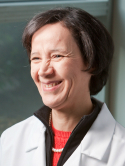Y-chromosomal diversity in Europe is clinal and influenced primarily by geography, rather than by language Journal Article
| Authors: | Rosser, Z. H.; Zerjal, T.; Hurles, M. E.; Adojaan, M.; Alavantic, D.; Amorim, A.; Amos, W.; Armenteros, M.; Arroyo, E.; Barbujani, G.; Beckman, G.; Beckman, L.; Bertranpetit, J.; Bosch, E.; Bradley, D. G.; Brede, G.; Cooper, G.; Côrte-Real, H. B. S. M.; de Knijff, P.; Decorte, R.; Dubrova, Y. E.; Evgrafov, O.; Gilissen, A.; Glisic, S.; Gölge, M.; Hill, E. W.; Jeziorowska, A.; Kalaydjieva, L.; Kayser, M.; Kivisild, T.; Kravchenko, S. A.; Krumina, A.; Kučinskas, V.; Lavinha, J.; Livshits, L. A.; Malaspina, P.; Maria, S.; McElreavey, K.; Meitinger, T. A.; Mikelsaar, A. V.; John Mitchell, R.; Nafa, K.; Nicholson, J.; Nørby, S.; Pandya, A.; Parik, J.; Patsalis, P. C.; Pereira, L.; Peterlin, B.; Pielberg, G.; João Prata, M.; Previderé, C.; Roewer, L.; Rootsi, S.; Rubinsztein, D. C.; Saillard, J.; Santos, F. R.; Stefanescu, G.; Sykes, B. C.; Tolun, A.; Villems, R.; Tyler-Smith, C.; Jobling, M. A. |
| Article Title: | Y-chromosomal diversity in Europe is clinal and influenced primarily by geography, rather than by language |
| Abstract: | Clinal patterns of autosomal genetic diversity within Europe have been interpreted in previous studies in terms of a Neolithic demic diffusion model for the spread of agriculture; in contrast, studies using mtDNA have traced many founding lineages to the Paleolithic and have not shown strongly clinal variation. We have used 11 human Ychromosomal biallelic polymorphisms, defining 10 haplogroups, to analyze a sample of 3,616 Y chromosomes belonging to 47 European and circum-European populations. Patterns of geographic differentiation are highly nonrandom, and, when they are assessed using spatial autocorrelation analysis, they show significant clines for five of six haplogroups analyzed. Clines for two haplogroups, representing 45% of the chromosomes, are continentwide and consistent with the demic diffusion hypothesis. Clines for three other haplogroups each have different foci and are more regionally restricted and are likely to reflect distinct population movements, including one from north of the Black Sea. Principal-components analysis suggests that populations are related primarily on the basis of geography, rather than on the basis of linguistic affinity. This is confirmed in Mantel tests, which show a strong and highly significant partial correlation between genetics and geography but a low, nonsignificant partial correlation between genetics and language. Genetic-barrier analysis also indicates the primacy of geography in the shaping of patterns of variation. These patterns retain a strong signal of expansion from the Near East hut also suggest that the demographic history of Europe has been complex and influenced by other major population movements, as well as by linguistic and geographic heterogeneities and the effects of drift. |
| Keywords: | major clinical study; genetic variability; alleles; gene frequency; haplotypes; europe; models, genetic; language; polymorphism, genetic; genetic markers; geography; genetic polymorphism; linguistics; phylogeny; y chromosome; geographic distribution; variation (genetics); emigration and immigration; humans; human; male; priority journal; article; africa, northern; oceans and seas; unidentified agents |
| Journal Title: | American Journal of Human Genetics |
| Volume: | 67 |
| Issue: | 6 |
| ISSN: | 0002-9297 |
| Publisher: | Cell Press |
| Date Published: | 2000-12-01 |
| Start Page: | 1526 |
| End Page: | 1543 |
| Language: | English |
| DOI: | 10.1086/316890 |
| PUBMED: | 11078479 |
| PROVIDER: | scopus |
| PMCID: | PMC1287948 |
| DOI/URL: | |
| Notes: | Export Date: 18 November 2015 -- Source: Scopus |




